I want to build a box for A11MS .. My requirements are that they should sound as revealed as they can.Soundstage 2D and 3D are important to me.
Can you help me find a box that can handle this?
I'm happy if they can go down to F3 50hz.
Thanks for all the suggestions you can give me.
Can you help me find a box that can handle this?
I'm happy if they can go down to F3 50hz.
Thanks for all the suggestions you can give me.
Last edited:
FWIW, a handful that I've done. They all get below 50Hz, with the smallest version of Nostromo (intended for high output impedance amplifiers) having the least extension, with an anechoic F6 of about 48Hz. The others get lower.
Attachments
-
Nostromo-Alpair11ms-reflex.pdf143.3 KB · Views: 324
-
PensilA11-P11.pdf50.9 KB · Views: 248
-
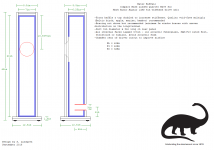 Water Buffalo 11MS compact MLTL Imperial.PNG50.5 KB · Views: 784
Water Buffalo 11MS compact MLTL Imperial.PNG50.5 KB · Views: 784 -
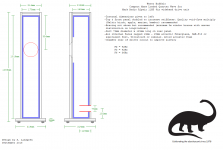 Water Buffalo 11MS compact MLTL metric.PNG51.9 KB · Views: 622
Water Buffalo 11MS compact MLTL metric.PNG51.9 KB · Views: 622 -
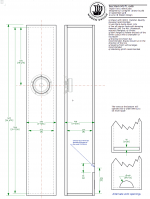 SeaStack-MLTL.png41.5 KB · Views: 651
SeaStack-MLTL.png41.5 KB · Views: 651 -
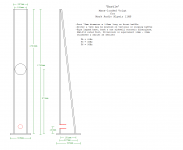 Alpair 11MS Bastle v.1.PNG29.6 KB · Views: 755
Alpair 11MS Bastle v.1.PNG29.6 KB · Views: 755
Scottmoose
You are an angel.
I think a small front will make it easier for them to disappear into the soundscape. Correct me if I'm wrong.
But maybe it's just enough that they are not wide?
Do you have any experience with this?
You are an angel.
I think a small front will make it easier for them to disappear into the soundscape. Correct me if I'm wrong.
But maybe it's just enough that they are not wide?
Do you have any experience with this?
Well, in essence a lot of that comes down to diffraction effects. Different people have different views on this; however, a wideband driver, even one with a relatively wide dispersion pattern like the 11MS, is usually a bit more directional than, say, a regular dome tweeter, so they aren't as heavily affected by edge diffraction. That's not to say diffraction doesn't exist, just that it tends to be a bit less of an issue. I try to balance off step-loss with the inherent driver response, the intended use, and (as relevant) a reasonable guess at typical room gain.
Some feel narrow baffles offer advantages in imaging, but a very wide baffle could theoretically do more or less the same. Narrower tend to be more acceptable for most people's decor, and since many modern drivers have quite small volume requirements, it's sometimes tricky to actually create a good wide baffle design unless you're willing to made additions purely to create the extra width. Your mileage, as ever, may vary on that one. 😉
Some feel narrow baffles offer advantages in imaging, but a very wide baffle could theoretically do more or less the same. Narrower tend to be more acceptable for most people's decor, and since many modern drivers have quite small volume requirements, it's sometimes tricky to actually create a good wide baffle design unless you're willing to made additions purely to create the extra width. Your mileage, as ever, may vary on that one. 😉
If I understand you correctly, the size of the baffle on an FR does not mean that much. Especially in treble.
I know that the baffle can affect in certain frequencies.
A globe would be optimal for spreading frequencies.
In Sweden, there was a designer who manufactured such speakers. They were called Rondo. Olle Mirsch.
Unfortunately, it is difficult to make a globe.
I know that the baffle can affect in certain frequencies.
A globe would be optimal for spreading frequencies.
In Sweden, there was a designer who manufactured such speakers. They were called Rondo. Olle Mirsch.
Unfortunately, it is difficult to make a globe.
How much does the spread affect the size of the driver?
How are 2D and 3D affected by size?
Maybe I should choose 7MS or 5.3MS instead?
How are 2D and 3D affected by size?
Maybe I should choose 7MS or 5.3MS instead?
if the baffle & speaker are well done a wide baffle can image as well as a narrow one, other details are important as well.
Any loudspeaker is a huge number of compromises.
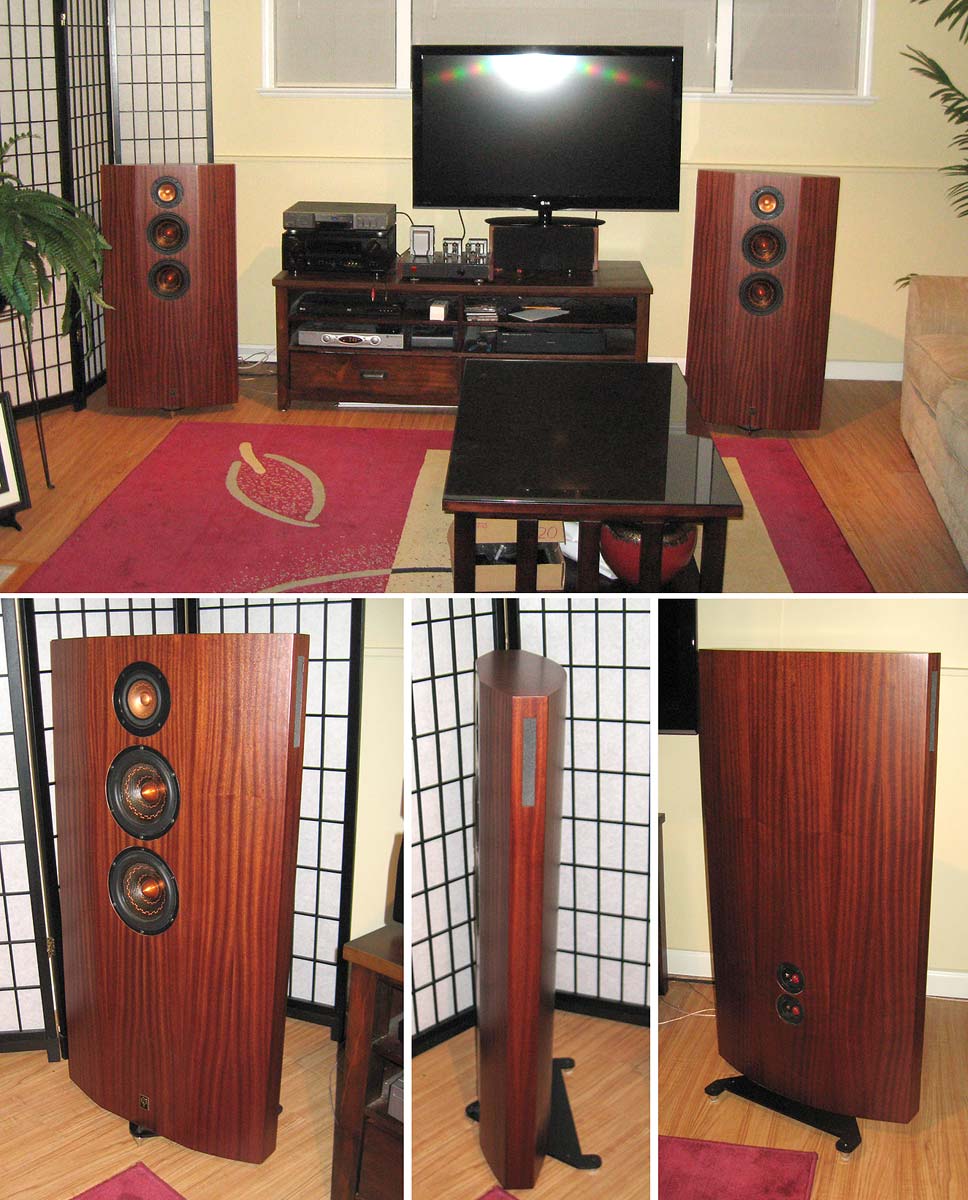
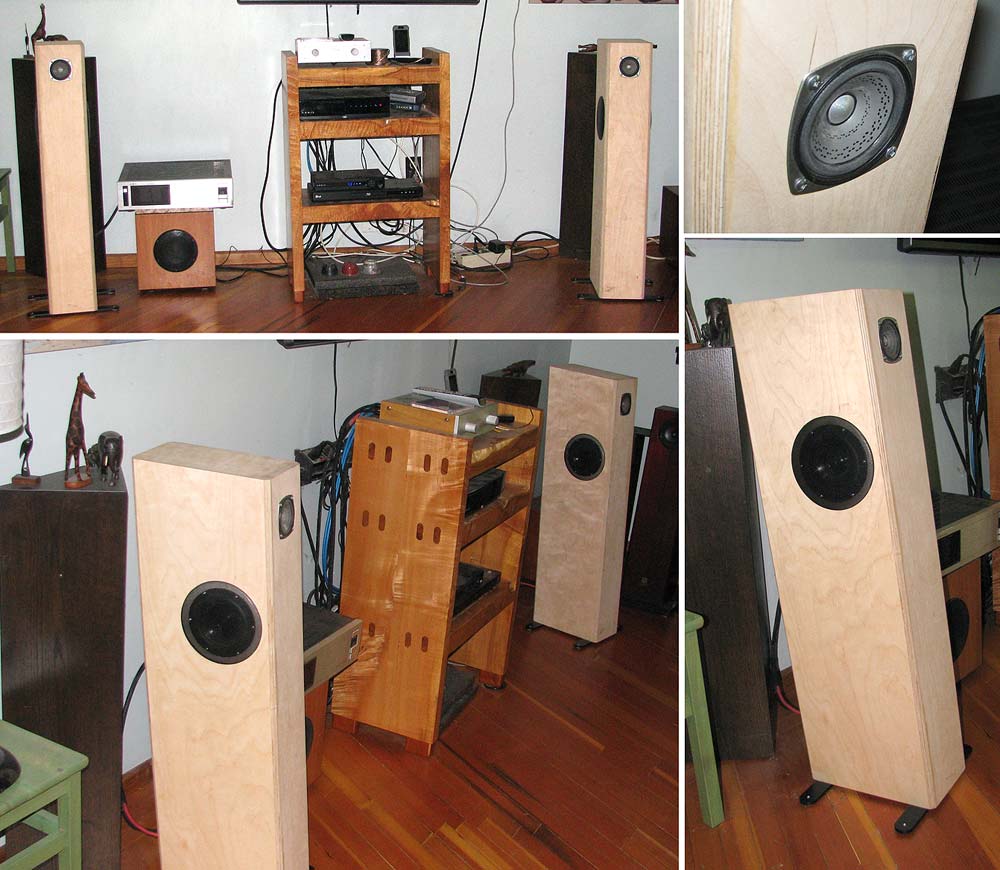
The effect of the details can be heard thru the various varieties of miniOnkens. CGR with rectangular form has a higher diffraction signature than the rectangular miniOnken with its large chamfers and then even better when the box is made more like a teardrop in the trapezoidal miniOnkens. Baffle width is similar, alignments are the same, only the shape details differ.
dave
Any loudspeaker is a huge number of compromises.


The effect of the details can be heard thru the various varieties of miniOnkens. CGR with rectangular form has a higher diffraction signature than the rectangular miniOnken with its large chamfers and then even better when the box is made more like a teardrop in the trapezoidal miniOnkens. Baffle width is similar, alignments are the same, only the shape details differ.
dave
Maybe I should choose 7MS or 5.3MS instead?
Unless loud is important the 2 smaller MA, both with monoSuspension and VERY similar voicing, will make for a better midTweeter.
dave
Last edited:
The occurrence of standing waves inside a loudspeaker box is difficult to avoid in a rectangular one. They are usually cloudy to the sound. You want to avoid such preferably.
I see that 11MS has low Qtot. Best suited for bass reflex and MLTL.
Scottmoose has presented these as examples.
Pencil is probably also a type of bass reflex.
I see that 11MS has low Qtot. Best suited for bass reflex and MLTL.
Scottmoose has presented these as examples.
Pencil is probably also a type of bass reflex.
Last edited:
Pensil is a Mass Loaded TL.
The A11ms wants to be in a small reflex box, to get low bass out of them requires something like a horn or transmission line.
dave
The A11ms wants to be in a small reflex box, to get low bass out of them requires something like a horn or transmission line.
dave
I was afraid a larger driver would result in poorer midrange and treble. But I'm more interested in a cone made of metal. Better resolution of intermediate registers than paper.
Have read to me that MS is not harsh in sound as a piece of metal can be.
Since it has one suspension and then I became very curious about this type of speaker unit. Some have mentioned that this sounds better than most 2 way speakers.
Ok pencil is a MLTL. Thanks Dave.
Have read to me that MS is not harsh in sound as a piece of metal can be.
Since it has one suspension and then I became very curious about this type of speaker unit. Some have mentioned that this sounds better than most 2 way speakers.
Ok pencil is a MLTL. Thanks Dave.
Last edited:
Since the second gen drivers Mark Audio has set new standards for how snooth up top metal cone drivers can be. A5.3 probably the best candidate in that respect.
And i know that the treatments i add further diminish any remaining ringing.
dave
And i know that the treatments i add further diminish any remaining ringing.
dave
Great .. Alpair 11MS (gen 2).
I got them today.
Today I was listening to a pair of Alpair 7 in frugel-horns made of bamboo.
Impressed. Very nice sound.
I got them today.
Today I was listening to a pair of Alpair 7 in frugel-horns made of bamboo.
Impressed. Very nice sound.
Last edited:
What is the difference between a small box BR and a large box with MLQW or MLTL?
How will the midrange be affected?
How will the midrange be affected?
Midrange will be affected minimally.
Any ripple from the quarter-wave box will hopefuly been quelled by the time you get up into the midtrnage. At the frequencies of interest it is external & internal diffraction, reflections, and resonances can cause mid differences.
dave
Any ripple from the quarter-wave box will hopefuly been quelled by the time you get up into the midtrnage. At the frequencies of interest it is external & internal diffraction, reflections, and resonances can cause mid differences.
dave
I was anxious to make a decision.
Which speaker box would you choose?
My room is about 18m2.
I like all kinds of music.
Pop, rock, soul mainly.
I have a tube amplifier (50w) and class d (500w).
I play mostly on a technics cd player. It is good at conveying 2D and 3D. I would like the speakers to be able to convey that.
As said. Which box would you choose for A11MS?
Which speaker box would you choose?
My room is about 18m2.
I like all kinds of music.
Pop, rock, soul mainly.
I have a tube amplifier (50w) and class d (500w).
I play mostly on a technics cd player. It is good at conveying 2D and 3D. I would like the speakers to be able to convey that.
As said. Which box would you choose for A11MS?
I can place the speakers anywhere in the room. Prefers to place them about 1m out from the front wall. Which gives the best 3D image. About 2m distance between them.
Room is 3.3m x 4.5m.
Room is 3.3m x 4.5m.
Last edited:
I've read about big horns. Brodgar horn. But I think my room is too small and that they should be placed against the front wall. I do not think they suit me when it comes to 3D. Correct me if I'm wrong.
I don't really know what you mean by '3d', since it's a purely subjective term, so it's difficult to comment and be sure we're talking about the same thing. People often hear what they believe in advance they are going to hear, so my 'stock' advice in such cases is (within the laws of physics 😉 ) build whatever you believe will work best for you.
- Home
- Loudspeakers
- Full Range
- Alpair 11MS box?